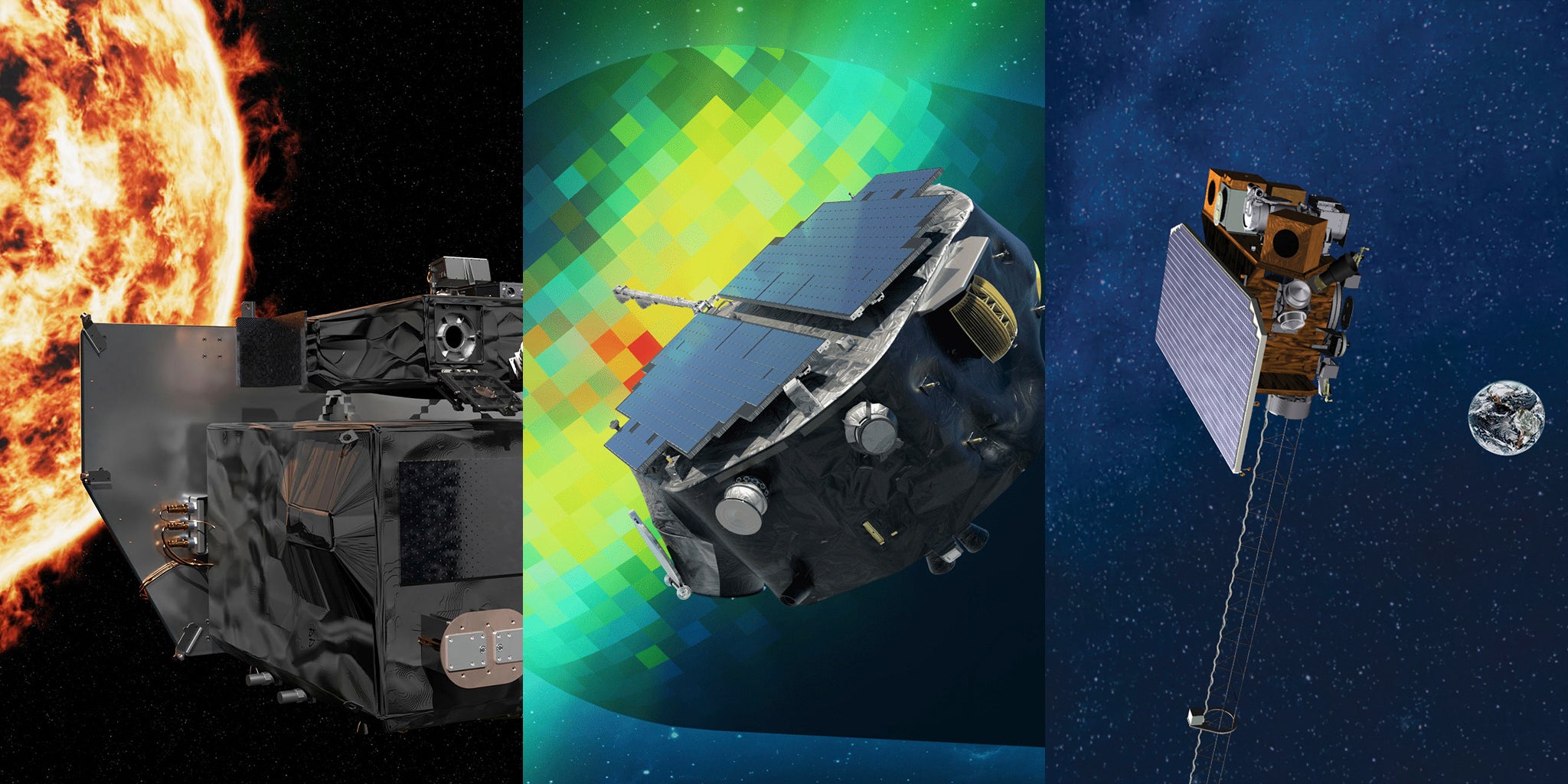Three new space weather satellites have soared into orbit from Kennedy Space Center, aiming to provide crucial insights into solar storms that can produce stunning auroras but also disrupt communications and threaten astronauts.
The trio lifted off on a SpaceX rocket shortly after dawn on Wednesday, destined for a sun-orbiting vantage point 1.6 million kilometres (one million miles) from Earth. Each satellite embarks on its own distinct mission.
The $1.6 billion project, encompassing the satellites and associated costs, is a joint effort by Nasa and the National Oceanic and Atmospheric Administration. NASA’s Joe Westlake described it as “the ultimate cosmic carpool” for its cost-saving approach.
Leading the mission is NASA’s Interstellar Mapping and Acceleration Probe (IMAP), the first to be deployed.
IMAP will scrutinise the outer reaches of the heliosphere, the protective, solar wind-driven bubble of gas surrounding our solar system.
Crucially, IMAP will also offer a valuable 30-minute advance warning of solar storms for astronauts exploring the moon under NASA’s Artemis programme.

Officials expect the observatory to be fully operational by the time four astronauts fly around the moon and back next year.
NASA’s smaller Carruthers Geocorona Observatory is also flying, focusing on Earth’s outermost, glowing atmosphere that extends well beyond the moon. It’s named after the late scientist George Carruthers, who invented the ultraviolet telescope left on the moon by the Apollo 16 astronauts in 1972.
NOAA’s newest space weather observatory will be pushed into full-time, around-the-clock forecasting service. It will keep tabs on the sun’s activity and measure the solar wind to help keep Earth safe from threatening flares.
Officials expect NASA’s satellites to be in position and operational by the beginning of next year, and NOAA’s spacecraft by spring.
NASA is kicking in more than $879 million for its two missions, while NOAA’s share is $693 million.
While NASA already has a fleet of sun-observing spacecraft, science mission chief Nicky Fox said these newer missions offer more advanced instruments that will provide more sensitive measurements.
“Just being able to put all those together to give us a much, much better view of the sun,” she said.
The goal is to better understand the sun in order to better protect Earth, according to officials. As spectacular as they are, the northern and southern lights will not be the mission’s focus.
During a preview of NASA’s upcoming Artemis mission around the moon, science officials said Tuesday that these new space weather missions will enhance forecasting and provide vital alerts if major solar activity strikes.
If that happens, the four astronauts will take temporary shelter in a storage area under the capsule’s floor to avoid the heightened radiation levels.




